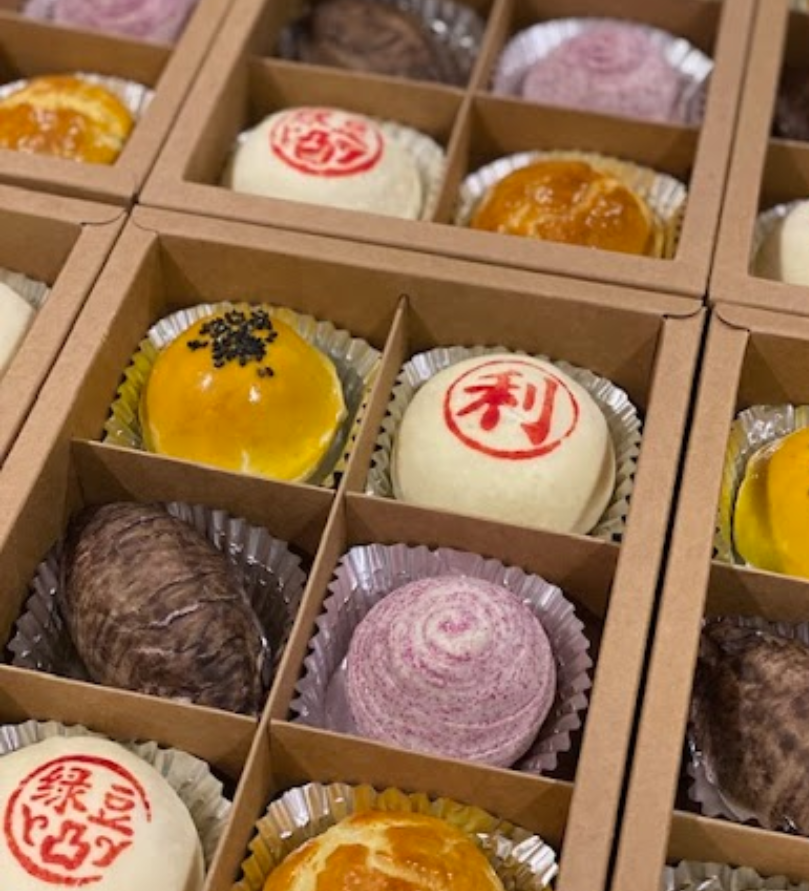Mid-Autumn Festival
The Mid-Autumn Festival is a holiday in China that celebrates the rice harvest and many fruits. It’s a time for friends and family to gather together, offer thanks to the fall harvest, and pray for longevity and good fortune.
The festival falls on the 15th day of the eighth month of the Chinese lunisolar calendar, when the moon is at its fullest. It’s also known as the Festival of Reunion because the full moon symbolizes family reunion.
The festival celebrations date back more than 2,000 years. During the festival, families gather together to light lanterns, eat moon cakes, and appreciate the round moon. Every home prepares various foods to celebrate the festival, including mooncakes, pumpkin, river snails, duck, and hairy crabs.
In the Chinese mainland, people usually have a three-day public holiday for Mid-Autumn Festival.
Mid-Autumn Festival is an official holiday period, so all governmental sectors and most private own companies are closed.六粒平裝 ($30.00)-自選口味
六粒禮盒 ($31.50)-自選口味
蛋黃酥/波蘿蛋黃酥/芋頭酥/小山芋/肉燥綠豆椪/素綠豆椪
Option 1 六粒平裝 ($30.00) #1盒
1 2 3 4 5 6 蛋黃酥 波蘿蛋黃酥 芋頭酥 小山芋 肉燥綠豆椪 素綠豆椪 _____________________________________
Embracing the Festivities: Welcoming the Year of the Wood Dragon in Chinese New Year
As the Year of the Dragon unfolds, the joyous celebrations of Chinese New Year beckon everyone to join in the festivities. This cultural celebration, marked by prosperity and respect, encompasses a rich tapestry of traditions akin to American holidays. From decorations and gifts to family gatherings, this celebration is a blend of gratitude and symbolism.
Scheduled for February 10, 2024, the Chinese New Year, also known as Lunar New Year, prompts preparations about two weeks in advance. Across Colorado, diverse communities and organizations host Lunar New Year celebrations, honoring America’s immigrant history and fostering cultural awareness.
Chinese New Year follows the lunar calendar, celebrating the second new moon after the winter solstice on Dec. 21. This results in varying dates each year, falling between Jan. 21 and Feb. 20. Not confined to China, Lunar New Year is celebrated across Asia, including Korea, Vietnam, Taiwan, Singapore, and more.
The upcoming Year of the Wood Dragon, from Feb. 10, 2024, to Jan. 28, 2025, holds special significance in the Chinese calendar. Rooted in a century-old story, the Chinese zodiac comprises 12 animals, each representing a year. The wood dragon, creative and curious, embodies traits of drive, motivation, and self-confidence.
Symbolism is at the heart of Chinese New Year traditions. From the clothes worn to the timing of cleaning houses, every action aims to usher in luck and prosperity. Numbers hold particular significance, with eight symbolizing success, nine representing longevity, and four considered unlucky due to its association with death.
Preceding the celebration, cleaning rituals sweep away the past year’s dust, and new clothes in red and gold symbolize good luck and prosperity. Decorations in these hues adorn homes, akin to Christmas decorations. The occasion also mirrors Dia De Los Muertos, as families pay respects to ancestors and elders through offerings at altars or graves.
Lunar New Year’s Eve brings families together for a feast, where elders are honored with wishes for a prosperous new year and good health. The tradition of giving red envelopes, containing money or valuable items, symbolizes respect from the younger generation.
The Lion Dance, with origins rooted in warding off evil spirits, now serves as a cultural spectacle. Historically a martial arts competition, it symbolizes unity and strength in communities.
A grand feast marks the end of the day, featuring dumplings, whole fish for prosperity, noodles for longevity, spring rolls for wealth, and fruit for wellness. Sweet rice balls symbolize family unity and togetherness, encapsulating the spirit of a prosperous new year.
As the Year of the Wood Dragon approaches, the Asian Lunar Year Celebration on Feb. 10, hosted by Unified Workforce, invites everyone to partake in the cultural richness and festive spirit, embracing the traditions that define this auspicious occasion.

